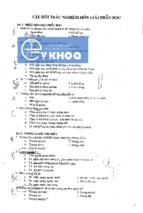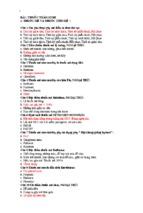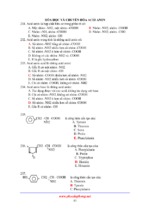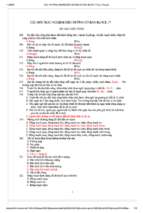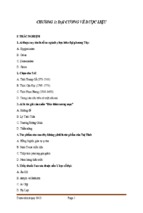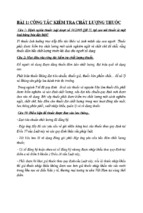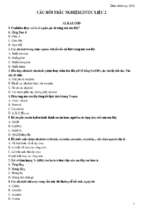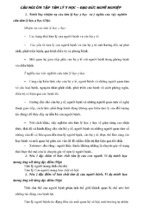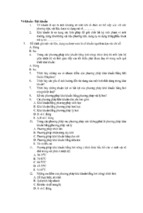Once a month Dr Linda Miller, consultant dermatologist, holds a clinic in the health centre where GP
Dr Paul Robertson works. Dr Miller has just finished seeing her last scheduled patient when Dr
Robertson enters the clinic room.
Dr Robertson: Hello, Linda. I’m very glad to find you’re still here. I thought I might have missed you.
Dr Miller: Hello, Paul. It’s lucky you caught me. I’ve just finished dictating the letter on the last patient
and I was on my way back to the hospital. What can I do for you?
Dr Robertson: It’s about a woman who’s in my consulting room at the moment. Her name is Mary
Davies and she’s 31. I don’t see her very often, but she came to see me about a week ago. She’d not
been feeling herself for a few days and I thought she had a respiratory tract infection.
Dr Miller: So, what did you do?
Dr Robertson: I started her on a course of amoxycillin, 250 mg three times a day.
Dr Miller: That sounds very reasonable. How is she now?
Dr Robertson: Not at all well, I’m afraid. She came back to see me because she’s feeling very unwell
and yesterday, she developed a rash on her arms, the palms of her hands and the soles of her feet.
She’s also got a very sore mouth.
Dr Miller: I see. Is there any other relevant history? Has she been abroad or has she been in contact
with anyone with a similar problem?
Dr Robertson: I didn’t ask her about going abroad but she doesn’t know anyone else who’s had a
similar problem.
Dr Miller: Would you like me to have a look at her?
Dr Robertson: I’d be very grateful if you would. If you hadn’t been here today I would have sent her up
to the hospital immediately anyway.
**********
Ten minutes later, Dr Miller and Dr Robertson are back in the clinic room.
Dr Miller: Well, she certainly is quite unwell. Your nurse checked her temperature and it’s 38.7°C.
She’s got an erythematous macular rash on her arms, palms, and the soles of her feet. She’s also got
ulceration of her oral and genital mucosa, injected eyes and some small ulcers on her conjunctivae.
Dr Robertson: The rash appears to vary quite a bit, and some of the lesions have what looks like
a blister in the centre.
Dr Miller: Yes, that’s right. She mentioned that the lesions develop over a few days and you could see
that the macules were in different stages of evolution.
Dr Robertson: So, what do you think, is it related to her recent illness or to the antibiotic therapy?
Dr Miller: Well, it could actually be either. This is a fairly typical, and quite severe, case of erythema
multiforme or what’s called Stevens-Johnson syndrome. The lesions with the central blister are quite
characteristic.
Dr Robertson: Oh yes. Is that what they call target lesions?
Dr Miller: That’s right. In about half the cases we can’t discover the etiology of erythema multiforme
but one of the most common causes is drug hypersensitivity.
Dr Robertson: And, no doubt, penicillins are frequently implicated.
Dr Miller: Yes, and sulfonamides as well. However, we also see it in response to streptococcal
infections, and viruses such as herpes simplex can be responsible, especially in recurrent cases.
Dr Robertson: There certainly isn’t any known allergy to penicillins in Mrs Davies’ case. Are you going
to admit her to the ward?
Dr Miller: I think we should. Patients with the severe form like her can be quite sick. We also need to
do some investigations and make sure we’re not missing anything. I’ll phone my SHO and then I can
see her again when I get back to the hospital.
Dr Robertson: Thanks. I’ll go and put her in the picture and then I’ll organize transport for her
admission.
**********
Three hours later, Dr Miller is in her office at the hospital and talking to her Senior House Officer, Dr
Tan.
Dr Miller: Has Mrs Davies settled in?
Dr Tan: Yes, although she’s really not very well.
Dr Miller: No. It’s lucky that my clinic at the Health Centre was today.
Dr Tan: Are you sure she’s got Stevens-Johnson syndrome or could this be something else?
Dr Miller: It’s a fairly classical case and any other diagnosis is quite unlikely, but we do need to check
a few other things, just to be on the safe side.
Dr Tan: What other differential diagnoses are there?
Dr Miller: Well, with lesions on her palms and soles, we must exclude secondary syphilis, although it’s
obviously unlikely.
Dr Tan: Since she’s got bullous lesions and orogenital ulceration, I suppose we need to consider
diseases like pemphigus and pemphigoid.
Dr Miller: We do, although she’s rather young for both conditions and pemphigus tends to have a
much more protracted course. Pemphigoid and one other possibility, bullous dermatitis herpetiformis,
are usually more chronic, the mucous membrane involvement is less and there isn’t generally much
systemic upset.
Dr Tan: Could she have Behçet’s syndrome?
Dr Miller: It’s fairly uncommon and usually associated with more systemic symptoms. The only other
possibilities are systemic lupus erythematosus, septicemia, and very rarely, something like a
lymphoma.
Dr Tan: I’ve organized a throat swab, an ASO titre and the initial blood for sequential viral studies.
What else should I do?
Dr Miller: She ought to have some blood cultures, and we should culture some of the lesions to
exclude secondary infection. Can you do the serological tests for syphilis as well?
Dr Tan: Does she need a skin biopsy?
Dr Miller: I don’t think so. Not at this stage, anyway. I would only do a skin biopsy if there was some
doubt about the diagnosis and then it would be a question of excluding some of the rarer conditions
we’ve just talked about.
Dr Tan: Does she need intravenous fluids?
Dr Miller: It may be necessary if she’s having problems drinking. I’ll come and see her with you again
now and then we can think about that.
Dr Tan: Thank you.
- Xem thêm -

